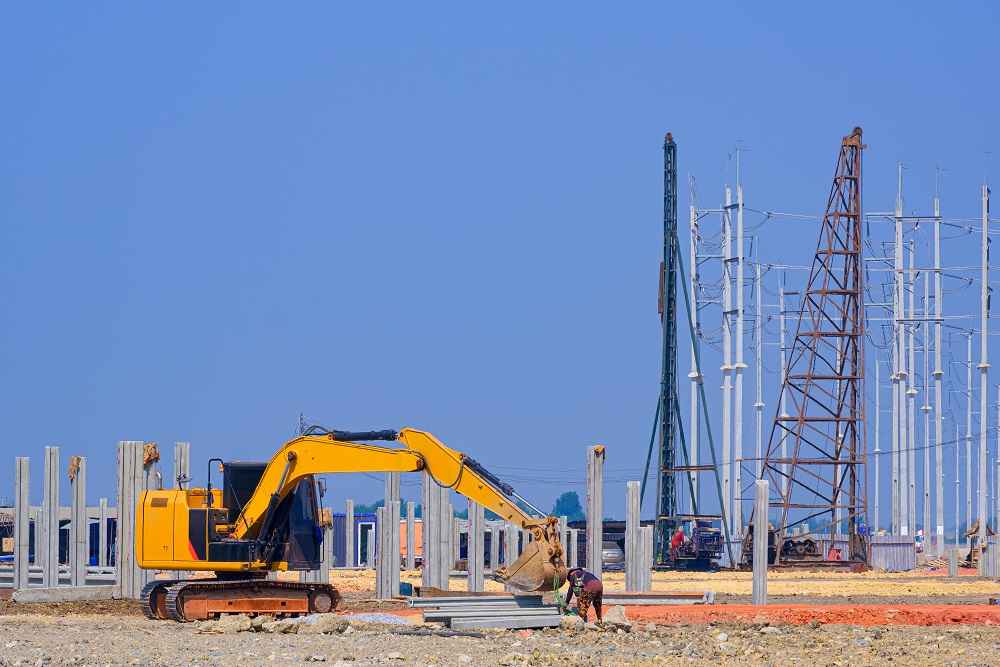Pile foundations are essential engineering structures used to support heavy loads and transfer them to deeper, more stable layers of soil or rock. They are commonly employed in various construction projects, including buildings, bridges, and offshore structures, where shallow foundations may be inadequate. Understanding the different types of pile foundations and their applications is crucial for ensuring the stability and durability of civil engineering projects. In this article, we explore the various types of pile foundations and their unique characteristics.
Driven Piles
Driven piles are installed into the ground using impact or vibration techniques, driving them into the soil until they reach the desired depth or resistance. They are typically made of materials such as steel, concrete, or timber and are driven into the ground using hydraulic hammers, diesel hammers, or vibratory pile drivers. Driven piles are commonly used in projects where the soil conditions are suitable for pile driving and where high load-bearing capacity is required. They are effective in resisting both axial and lateral loads and are widely used in bridge construction, marine structures, and high-rise buildings.
Driven piles offer various advantages, including ease of installation, suitability for a wide range of soil types, and high load-bearing capacity. Their versatility makes them suitable for various applications, from supporting heavy structures to providing stability in marine environments. Additionally, driven piles can be installed relatively quickly, making them a cost-effective solution for projects with tight schedules.
Bored Piles
Bored piles, also known as drilled shafts or auger-cast piles, are constructed by drilling a hole into the ground using a rotary drilling rig and then filling it with concrete and reinforcement. Bored piles are commonly used in projects where soil conditions are challenging or where environmental considerations, such as noise and vibration, limit the use of driven piles. They are suitable for a wide range of soil types, including cohesive soils, granular soils, and rock, and can be installed to considerable depths. Bored piles are commonly used in tall buildings, bridges, and infrastructure projects where high load-bearing capacity and structural integrity are paramount.
Bored piles offer several advantages over other types of pile foundations. Their ability to penetrate various soil types and reach significant depths makes them suitable for projects with complex geological conditions. Additionally, bored piles produce minimal noise and vibration during installation, reducing their impact on surrounding structures and the environment. With proper design and construction techniques, bored piles can provide reliable support for structures in both land and marine environments.
Screw Piles
Screw piles, also known as helical piles or screw anchors, are installed by rotating them into the ground using hydraulic machinery or handheld equipment. They consist of a helical-shaped steel shaft with one or more helices attached to provide anchorage in the soil. Screw piles are particularly suitable for projects requiring rapid installation, minimal site disturbance, and high load-bearing capacity. They are commonly used in applications such as foundation repair, temporary structures, and renewable energy projects, including wind turbines and solar panel installations. Screw piles offer advantages such as ease of installation, versatility, and suitability for a wide range of soil conditions.
Screw piles offer several benefits compared to traditional pile foundations. Their helical design allows them to be installed quickly and easily using lightweight equipment, reducing installation time and costs. Additionally, screw piles can be installed in areas with limited access or restricted headroom, making them suitable for projects with challenging site conditions. With their ability to provide immediate load-bearing capacity, screw piles offer a reliable foundation solution for various construction applications.
Micropiles
Micropiles, also known as mini piles or pin piles, are small-diameter piles typically ranging from 100mm to 300mm in diameter. They are constructed by drilling a hole into the ground and then grouting reinforcement into place, providing structural support and stability. Micropiles are commonly used in projects where access is restricted, or space is limited, such as underpinning existing structures, stabilizing slopes, and retrofitting foundations. They are suitable for both tension and compression loads and can be installed in a variety of soil and rock conditions. Micropiles offer advantages such as high load capacity, versatility, and minimal environmental impact.
Micropiles offer several advantages over conventional pile foundations. Their small diameter allows them to be installed in tight spaces or areas with limited clearance, making them suitable for projects with challenging site conditions. Additionally, micropiles can be installed using lightweight equipment, reducing the need for heavy machinery and minimizing disruption to surrounding structures and the environment. With their ability to provide reliable support in a wide range of soil and rock conditions, micropiles offer a cost-effective foundation solution for various construction projects.


